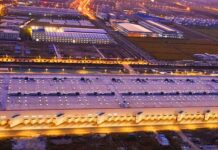Design has been, and always will be, a reflection of our present culture. It is a creative expression of our collective desires, needs, and aspirations. But design is more than just a reflection of our present; it also has the power to shape our future. In recent years, designers have been exploring the possibilities of creating designs that not only anticipate the future but shape it at the same time. These futuristic concepts are emerging in every field of design, from architecture to product design, and they are influencing the way we approach design today.
The Importance of Designing for the Future
Designing for the future is important because it enables us to anticipate and prepare for the changes that lie ahead. By exploring futuristic concepts, designers can anticipate the needs and desires of consumers, create innovative solutions to existing problems, and shape the way we live, work, and interact with the world. The importance of designing for the future cannot be overstated, as it allows us to create a better world for ourselves and future generations.
Designing for the future is not just about creating new products and technologies, but also about improving and adapting existing ones to meet the changing needs of society. It is about creating designs that are sustainable, adaptable, and resilient, and that can withstand the test of time. This is why designing for the future is so critical to our continued success as a society.
Futuristic Concepts in Design
Futuristic concepts in design are about creating designs that push the boundaries of what is currently possible, and that anticipate the needs and desires of consumers in the future. These concepts are not just about making things look cool or cutting-edge; they are about creating designs that are relevant, sustainable, and meaningful.
Here are some examples of futuristic concepts that are shaping design today:
-
Sustainability
Sustainability is a key concept in futuristic design, as designers seek to create designs that are environmentally and socially responsible. This includes using renewable materials, reducing waste and energy consumption, and creating products that are designed to last. Sustainable design is not only important for the environment, but also for businesses, as consumers are becoming increasingly aware of the impact of their purchases on the planet. By creating sustainable designs, businesses can attract environmentally conscious consumers and position themselves as leaders in sustainability.
-
Smart Design
Smart design is about creating designs that are connected, intuitive, and responsive to the needs of consumers. This includes using sensors and other technologies to create products that can adapt to changing environments and user preferences. Smart design is becoming increasingly popular in areas such as home automation, transportation, and healthcare. By creating designs that are smart and connected, designers can create products that are more efficient, convenient, and personalized.
-
Biomorphic Design
Biomorphic design is about creating designs that are inspired by nature, and that mimic the forms, patterns, and behaviors of living organisms. This includes using organic shapes, textures, and materials to create products that are more aesthetically pleasing and functional. Biomorphic design is becoming increasingly popular in areas such as architecture, product design, and transportation. By creating designs that are inspired by nature, designers can create products that are more harmonious and sustainable.
-
Augmented Reality
Augmented reality is about creating designs that blend the physical and virtual worlds, and that enhance the user experience by providing additional information or interactive features. This includes using technologies such as virtual reality and augmented reality to create products and environments that are more immersive and engaging. Augmented reality is becoming increasingly popular in areas such as retail, entertainment, and education. By creating designs that incorporate augmented reality, designers can create products and experiences that are more interactive and memorable.
Conclusion
In conclusion, futuristic concepts are shaping design today by pushing the boundaries of what is currently possible and anticipating the needs and desires of consumers in the future. By creating designs that are sustainable, smart, biomorphic, and augmented, designers are creating a new era of innovation and creativity that is changing the way we live, work, and interact with the world.
Designing for the future is not just about creating new products and technologies, but also about improving and adapting existing ones to meet the changing needs of society. It is about creating designs that are resilient, adaptable, and sustainable, and that can withstand the test of time. As technology continues to evolve and our society changes, designers must continue to explore and experiment with new concepts and ideas, in order to create designs that are relevant and meaningful.
Ultimately, designing for the future is about creating designs that have a positive impact on society and the world around us. By using futuristic concepts to create sustainable, smart, and biomorphic designs, designers can create a better future for us all. The future of design is bright, and it is up to designers to shape it in a way that benefits everyone.
Google News | Telegram
















